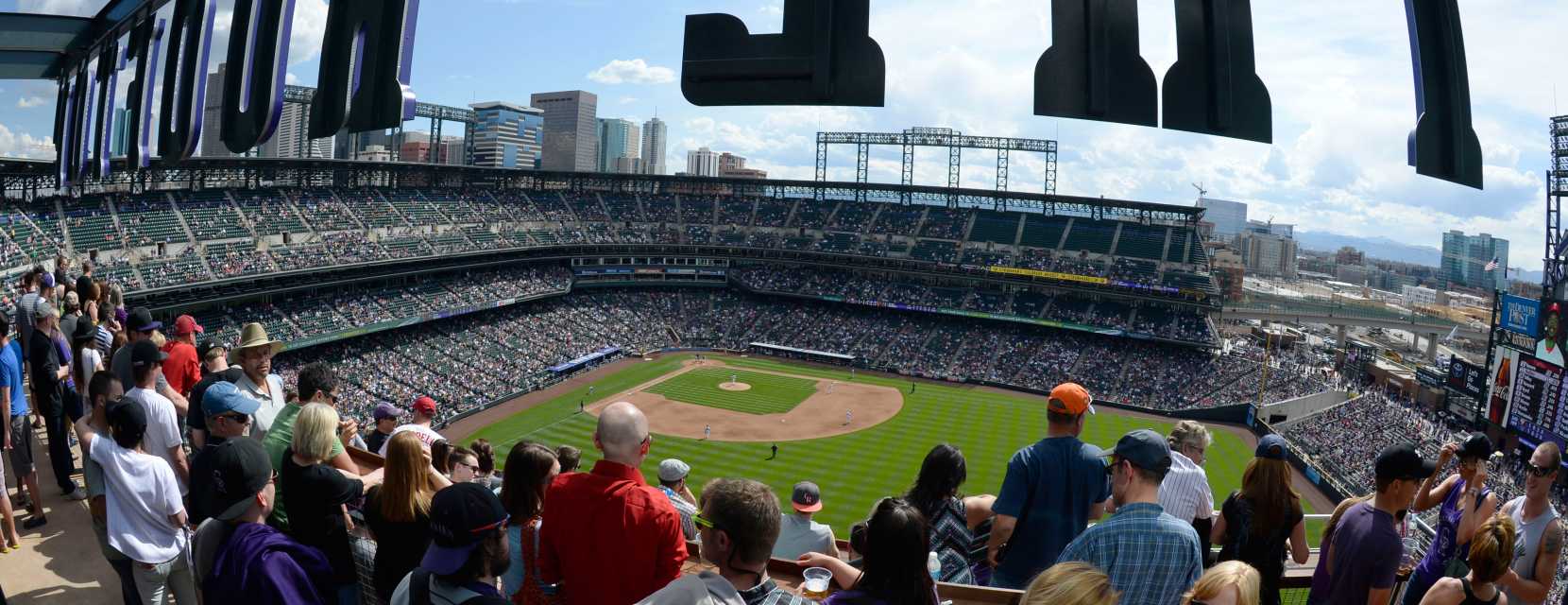It’s a magical time of year each spring when robins are building nests, flowers are starting to bloom and the Colorado Rockies are preparing to play ball at Coors Field. But it’s not baseball as usual, not if Robert Wilkinson, the Rockies’ procurement coordinator, has anything to do with it.
About two years ago, Wilkinson helped launch a sustainability task force at the ballpark.
“We meet with the key stakeholders here from every department biweekly to discuss every topic,” he says. “I think that’s been a big change: having a formal space to discuss it with everyone. Obviously, it all ties together, from concessions to the janitorial staff to the engineering of the ballpark to communication to our fans.”
Wilkinson says it’s part of a continuing journey to make Coors Field greener. A lighting upgrade before the 2019 season saved enough electricity to power 53 U.S. homes for a year, and the energy-efficient hydronic heating system installed under the field the next year is a must for Denver’s mile-high climate.
“April 5 is opening day this year. You need something to stimulate it [the grass] other than the weather so it starts growing earlier,” says Wilkinson.
With a possible transition to reusable cups in 2025, there’s also a big push to divert waste from the landfill.
“We recycle over 15 tons of aluminum, plastic and glass each year...enough to produce 1,000 large mountain bikes,” says Wilkinson.
Coors Field’s recycling and composting programs have been refined through research.
“We’ve had better communication with our trash haulers, and actually gone out to tour where they take it to see what it looks like,” says Wilkinson. “We started de-bagging all of the recycling, mostly plastic bottles and aluminum cans, around the ballpark and getting better education for our staff, which is a lot of back-of-the-house kitchen staff and janitorial staff on the importance of it and that it’s a priority of ours to take the time and make sure things go in the right places.”
Case in point: The recycling bins on the concourse are designed to be trash-proof because contamination over 20 percent means the entire load is landfill-bound.
“You can really only fit a bottle or a can in there,” says Wilkinson.
Composting is a bit too tricky to be public-facing at this time.
“There are no compost bins on the concourse for fans,” says Wilkinson. “It’s one of the easier things for us to control because it’s just staff. It’s the back of the house in the kitchens, the grass clippings, leftover food waste. We might have a ton of hot dog buns, for example, that are going to be no good by the time we have our next homestand.”
Wilkinson sees further room for improvement via a new partnership with WM (waste collection).
“We’ve hired them as sustainability consultants for a three-year contract,” he explains. “They baseline everything, and then we establish areas that we want to improve. They can really help sort through all of that, and they’ve done it with venues all over the country.”
Keeping Score
Here are some of the many ways Coors Field is addressing sustainability now and in the future.
Concessions
- Coors Field has refillable water stations throughout the ballpark. You can bring your own water bottle into the park.
- The Rockies are unveiling a new plant-based food stand in 2024, featuring compostable and recyclable service ware.
- In 2023, by partnering with Filta Fry, the Rockies saved more than 100,000 pounds of cooking oil and recycled another 23,000 pounds of cooking oil. This reduction in environmental impact is equivalent to planting 3,351 trees.
- The Coors Field Garden was the first ballpark garden in Major League Baseball and helps promote sustainable food sourcing and its produce is used inside the ballpark.
Waste Diversion
- The Rockies recycled more than 1,500 pallets in 2023, equivalent to 20 cords of wood or 3,000 bundles of firewood.
- The Rockies recycle 125 tons of cardboard each year.
- The Rockies have a composting program where they compost grass clippings, food waste and much more.
Energy
- The Rockies have electric vehicle charging stations in their main parking garage.
- The sports lights were changed to LED fixtures for the 2019 season. The old fixtures used 766,656 kWh of energy. The new LED fixtures use 378,972 kWh of energy — a savings of 387,684 kWh, which is enough to power 53 U.S. homes for a year.
- In 2020, the original boilers for the stadium were changed to new energy-efficient boilers. The old boilers in a peak heating month used 6,482 MBtu and the new boilers in a peak heating month use 1,530 MBtu. It's a savings of 4,952 MBtu/month in peak heating.
- The Rockies have solar energy panels above the fountain in centerfield as well as above the parking garage.
- The Rockies field heating system changed from electric to hydro, resulting in energy savings and a reduced environmental impact.




